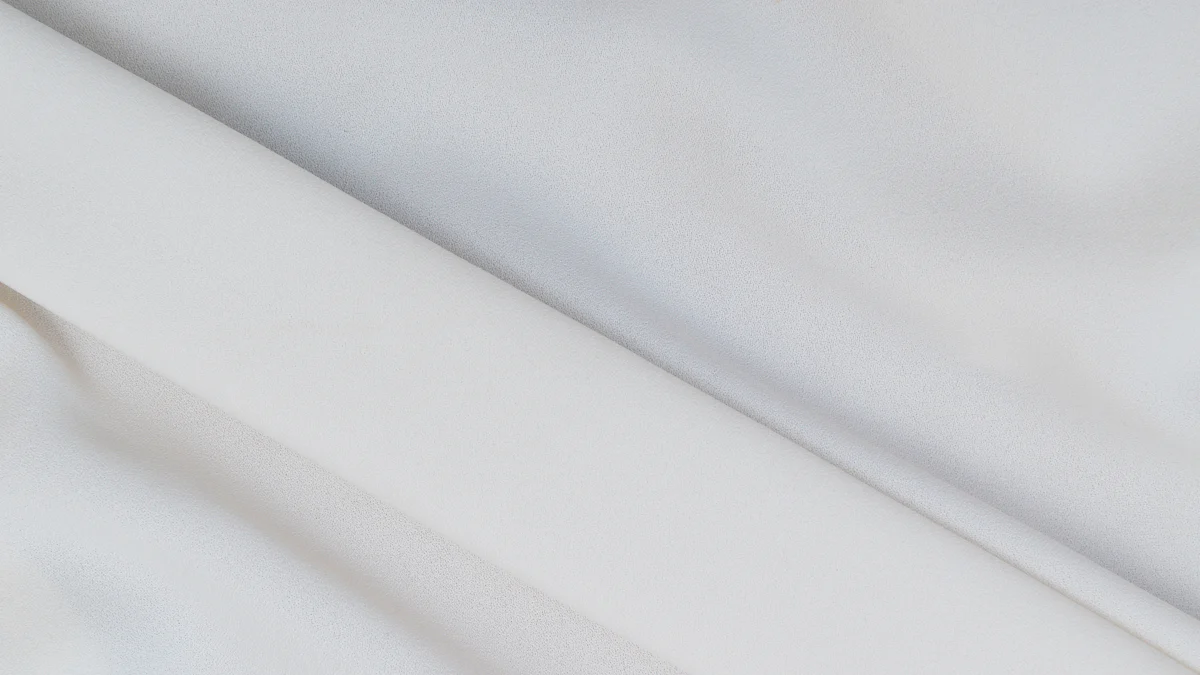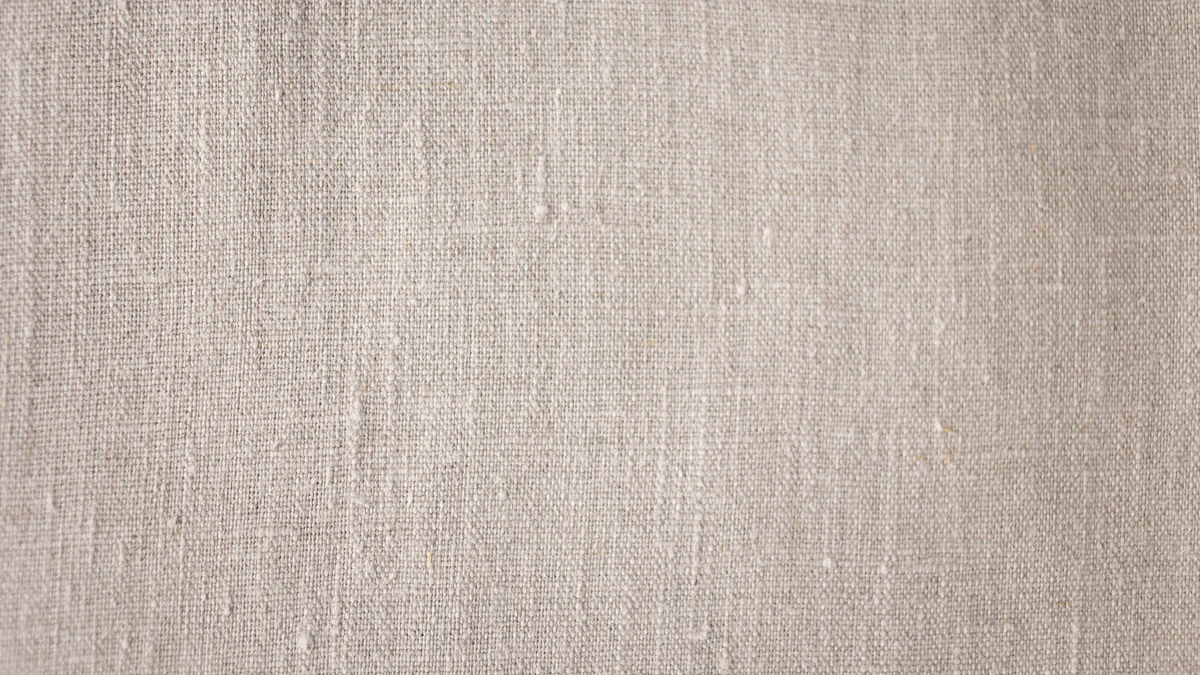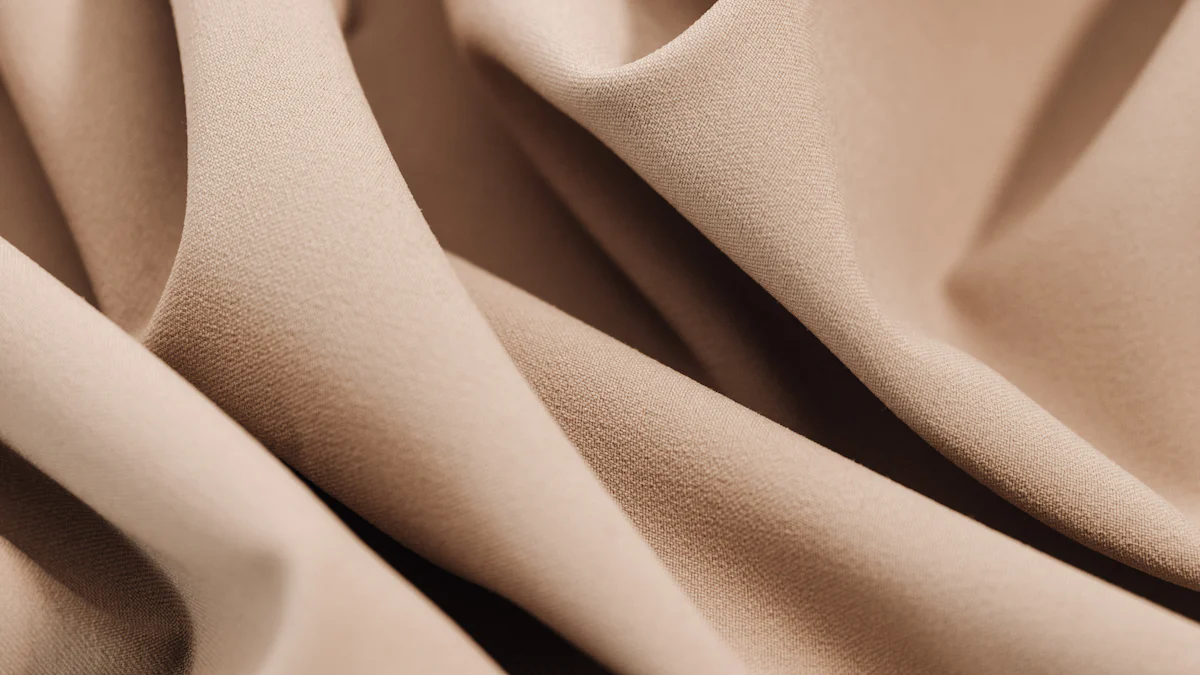
I’ve noticed something exciting about fabrics lately—poly linen is taking the spotlight in 2025! It’s not just about how it looks; it’s about what it stands for. With the global linen yarn market growing at a 5.80% CAGR through 2030, the demand for blended fabrics like poly linen is skyrocketing. Why? It’s versatile, stylish, and eco-friendly. Manufacturers are even using natural materials like hemp and bamboo or recycling polyester to make it. That’s a win for both fashion and the planet. Curious? Check out more about poly linen at https://www.huiletextile.com/poly-linen/.
Key Takeaways
- Poly linen is eco-friendly, made from recycled and natural materials. It helps lower pollution and saves on production costs.
- Check for green labels like GOTS and OEKO-TEX to pick safe and planet-friendly fabrics.
- Poly linen is useful for clothes and home items. It mixes style and strength for many uses.
Sustainability in Poly Linen

When I think about sustainability, poly linen stands out as a game-changer. It’s not just about looking good—it’s about doing good too. Let me break it down for you.
Recycled and Organic Materials
Poly linen made from recycled and organic materials is a win for the planet. Using recycled fabrics, for example, cuts greenhouse gas emissions by nearly 70% compared to making new polyester. That’s huge! Plus, organic materials like hemp or bamboo reduce pollution where they’re grown. They also cost less to produce, which means more affordable products for us. And let’s be honest—don’t we all want to support brands that care about the environment?
Here’s why these materials matter:
- They lower pollution in local areas.
- They meet the growing demand for sustainable choices.
- They help keep production costs down.
Low-Impact Production Techniques
I’ve noticed that more manufacturers are switching to low-impact production methods. These techniques use less water and energy, which is great for the environment. But it’s not always easy. Many factories still rely on outdated machinery, and rising energy costs make things tricky. Supply chain disruptions don’t help either. Despite these challenges, the push for greener production is gaining momentum. It’s exciting to see how innovation is driving change in the poly linen industry.
| Challenge | Description |
|---|---|
| Outdated machinery | Inefficient processes slow down progress. |
| Rising energy costs | Energy-intensive methods increase expenses. |
| Supply chain disruptions | Raw material shortages delay production. |
Certifications for Eco-Friendly Poly Linen
Certifications like GOTS and OEKO-TEX make it easier to trust the fabrics we buy. GOTS ensures that harmful substances are kept out of the production process, while OEKO-TEX guarantees that every part of the fabric is non-toxic. These certifications also promote sustainable practices, which is a big deal for poly linen. I always look for these labels when shopping—it’s my way of supporting eco-friendly choices.
Here’s what these certifications do:
- GOTS ensures fabrics are safe for people and the planet.
- OEKO-TEX confirms that no harmful chemicals are used.
- Both encourage sustainable manufacturing.
Poly linen is proving that sustainability and style can go hand in hand. It’s exciting to see how this fabric is leading the charge toward a greener future.
Innovations in Poly Linen Technology
Smart Textiles and Functional Features
Have you ever thought about fabrics that can do more than just look good? Poly linen is stepping into the future with smart textiles. I’ve seen fabrics that can regulate temperature, wick away moisture, or even block UV rays. Imagine wearing a poly linen shirt that keeps you cool on a hot day or curtains that protect your furniture from sun damage. These features make life easier and more comfortable. Plus, they’re perfect for activewear, outdoor furniture, and even travel gear. It’s amazing how technology is transforming something as simple as fabric into a high-tech solution.
Enhanced Durability and Maintenance
One thing I love about poly linen is how tough it is. It’s not just stylish; it’s built to last. Manufacturers are now blending polyester and linen in ways that make the fabric more durable. It resists wrinkles, stains, and even fading. That means less time ironing or worrying about spills. I’ve noticed that poly linen products hold up well after multiple washes, which is a big deal for busy people like me. It’s a fabric that works as hard as you do.
Advanced Dyeing and Color Trends
Let’s talk about color. Poly linen is embracing advanced dyeing techniques that create vibrant, long-lasting shades. I’ve seen earthy tones like terracotta and olive green trending, but bold colors like cobalt blue and mustard yellow are also making waves. These new methods use less water and fewer chemicals, which is better for the environment. Whether you’re into subtle neutrals or eye-catching hues, poly linen has something for everyone.
Poly Linen Styling Trends

Neutral and Earthy Tones
I’ve noticed that neutral and earthy tones are everywhere in 2025, and poly linen is no exception. These colors bring a sense of calm and connection to nature, which is exactly what we all need right now. Warm terracottas and earthy reds are my personal favorites. They add depth and warmth to any space, making it feel cozy and inviting. Tranquil greens are also trending, and they’re perfect for creating a serene vibe. Whether it’s a sofa, curtains, or even a dress, these tones align beautifully with the growing love for sustainable and natural aesthetics. It’s like bringing a little piece of the outdoors inside.
Bold Patterns and Textures
If you’re like me and love making a statement, bold patterns and textures in poly linen are a must-see. Designers are experimenting with geometric prints, oversized florals, and even abstract designs. These patterns add personality to any room or outfit. I’ve also seen textured poly linen fabrics that mimic the look of raw linen but with added durability. They’re perfect for creating visual interest without overwhelming the space. Mixing and matching patterns with neutral tones is a fun way to keep things balanced while still showing off your unique style.
Versatile Applications in Design
Poly linen is one of the most versatile fabrics I’ve come across. It works for so many things! In fashion, it’s used for everything from casual everyday clothing to high-end pieces. For home décor, it’s a go-to for upholstery, curtains, and even table linens. I’ve also seen it used in functional items like tote bags and aprons. Its blend of style and practicality makes it a favorite for modern design. Whether you’re updating your wardrobe or redecorating your living room, poly linen has you covered.
Applications and Market Growth
Fashion and Apparel Trends
Poly linen is making waves in fashion, and I can see why. Designers love its versatility and practicality. One standout innovation is Linen Type Cationic Fabric. It combines the luxurious look of linen with the durability of cationic polyester. This blend feels breathable and wicks away moisture, making it perfect for modern clothing. I’ve noticed it being used in everything from casual wear to high-end pieces. It’s ideal for creative designs that don’t sacrifice comfort or durability. Whether it’s a flowy summer dress or a tailored blazer, poly linen is redefining what’s possible in fashion.
Home Décor and Upholstery
When it comes to home décor, poly linen is a game-changer. I’ve seen it used in sofas, curtains, and even throw pillows. Its durability means it can handle everyday wear and tear, while its natural texture adds a cozy, stylish touch to any room. Earthy tones like olive green and terracotta are trending, and poly linen showcases these colors beautifully. Plus, it’s easy to clean, which is a lifesaver for busy households. Whether you’re redecorating your living room or adding a pop of color to your bedroom, poly linen fits right in.
Commercial and Hospitality Use
Poly linen is a favorite in hotels and restaurants, and it’s easy to see why. It’s durable enough to handle industrial laundry cycles, so it lasts longer and reduces replacement costs. It resists wrinkles, which saves time for housekeeping. It’s also breathable and comfortable, giving guests a luxurious experience. On top of that, it’s cost-effective and comes in a variety of colors and patterns. This makes it perfect for creating unique, welcoming spaces. Whether it’s tablecloths in a restaurant or bedding in a hotel, poly linen delivers style and practicality.
Poly linen is truly shaping the future of textiles. It’s sustainable, innovative, and stylish—what more could we ask for? For professionals in fashion and interior design, it’s a goldmine of possibilities. Blended fabrics like rayon-polyester offer vibrant colors and a luxurious feel, while performance fabrics combine durability with easy maintenance. Staying updated on these trends isn’t just smart—it’s essential. Businesses can save costs with on-demand services and subscription models, all while meeting customer expectations for safety and quality. Poly linen is more than a fabric; it’s a gateway to endless creativity and functionality.
FAQ
What makes poly linen different from regular linen?
Poly linen blends polyester and linen, combining the durability of polyester with the natural texture of linen. It’s stronger, resists wrinkles, and lasts longer than regular linen.
How do I care for poly linen fabrics?
It’s easy! Wash in cold water on a gentle cycle. Avoid bleach. Air-dry or tumble dry on low. Iron on a low setting if needed.
Is poly linen eco-friendly?
Yes! Many poly linen fabrics use recycled polyester and organic linen. Look for certifications like GOTS or OEKO-TEX to ensure eco-friendly production practices.
Post time: Jan-26-2025
